Minds On
Skip counting
Let’s practice some mental math and skip counting skills.
For the following activities, you may wish to use a hundred chart, a number line, counters, or another method of your choice to help count and support your thinking!
Let’s explore a Hundred Chart together! Your teacher will show you how to use the Hundred Chart and then you can try using it yourself!
Let’s explore a Number Line together! Your teacher will show you how to use the Number Line and then you can try using it yourself!
Task 1: Let’s count!
Try to keep track of the number of skip counts for each problem!
Explore the following example:
Start at 20. Skip count forward by 2 to 30.

The arrows tell how many skips took place to count until 30. There are 5 skips in total.
Use the following rules to skip count for each question:
- Start at 10. Skip count forward by 5, to 30.
- Start at 21. Skip count backwards by 2, to 3.
- Start at 39. Skip count forward by 5, to 64.
Brainstorm
What do you think?
Reflect on the following questions:
- How did you keep track of the number of skips?
- Was it easier for some of the problems than others? Why?
Record your ideas in a notebook or a method of your choice.
Task 2: Determine the end number
Let’s explore a Hundred Chart together! Your teacher will show you how to use the Hundred Chart and then you can try using it yourself!
Let’s explore a Number Line together! Your teacher will show you how to use the Number Line and then you can try using it yourself!
Let’s do the same questions from Task 1, but with different starting information.
We will know the starting number, how much we will skip by, and the number of skips. Now, we will count to determine the ending number.
Explore the following example:
Start at 20. Skip count forward by 2, for 5 skips.
What number did we end up with?

We end up with the number 30 when we skip count by 2, for 5 skips.
Select the correct answer, then press ‘Check Answer’ to see how you did.
You can record your answers in a notebook or a method of your choice.
Brainstorm
What are your thoughts?
Reflect on the following questions:
- How did you figure out the last number?
- Was it easier for some of the problems than others? Why?
Record your ideas in a notebook or a method of your choice.
Action
Time to Scratch
Let’s look at a program in Scratch that uses a repeat to help us with skip counting!
To explore Scratch code, press Scratch.(Opens in a new window)
Skip counting
Click the green flag near the top to see what the sprite does.
Select the correct answer, then press ‘Check Answer’ to see how you did.
Pseudocode
You might have recognized the numbers from our skip counting activity in Task 2: Determine the end number, found in the Minds On section.
Our task was:
Start at 20. Skip count forward by 2, for 5 skips.
What number do we end up with?
Now, let’s explore the pseudocode for this program.
Pseudocode:
- when start
- set number to 20
- print number
- repeat 5
- change number by 2
- print number
- end repeat
Student Tips
What is a pseudocode?
A pseudocode is used by computer programmers when planning their code.
They write it in a language that is like our everyday language, but in a way that can be translated to any programming language.
In Scratch, our code is similar to pseudocode, but looks more like this:
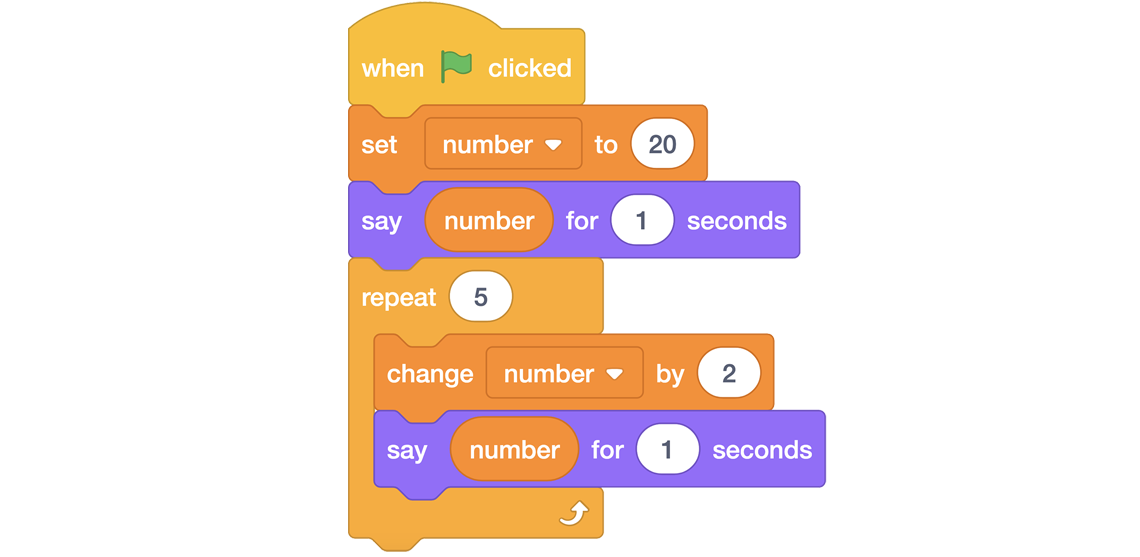 Description
Description
Alter the code
Task 1: Scratch code
Using the same Scratch code, let’s alter the code!
If you change the repeat code from 5 (current number) to 10, what do you think will be the sprite’s last number?
Change the repeat to 10 to see if your predicted outcome is correct. Then, click on the green flag to see what the sprite says.
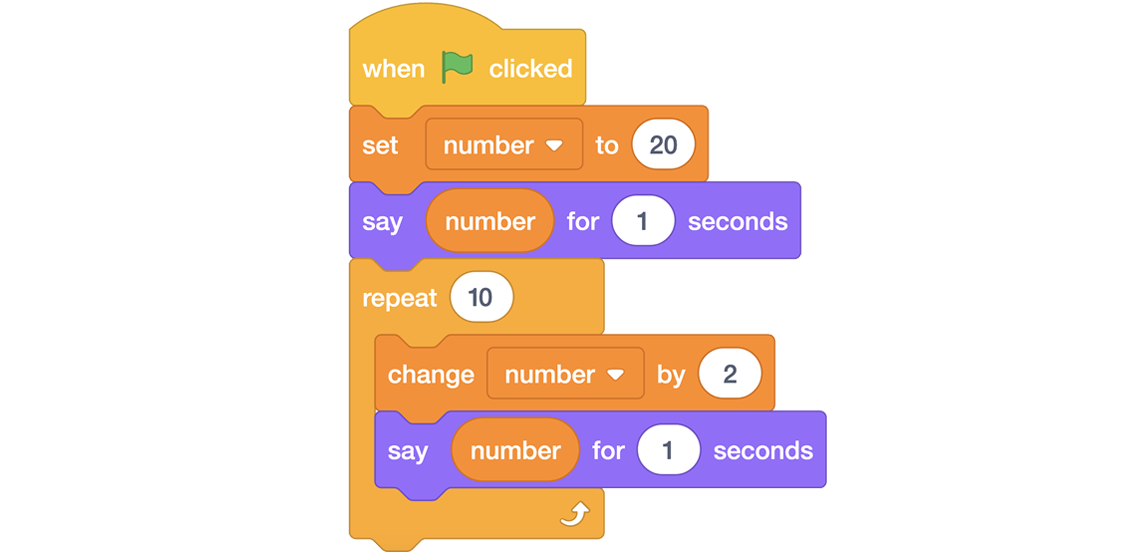
Select the correct answer, then press ‘Check Answer’ to see how you did.
Task 2: Coding to answer questions
Use the same teacher provided Scratch code to explore how to alter the code and to solve the following questions.
Question 1
Let’s use another skip counting pattern from the Minds On section:
Start at 10. Skip count forward by 5, for 4 skips.
What number do we end up with?
Follow the step-by-step instructions to alter the code to this question:
- In Scratch, at the top of the code, change the “set number” block to 10.
- Then, change the “repeat” block to 4.
- Alter the “change number by” block to 5.
Here’s the visual code:
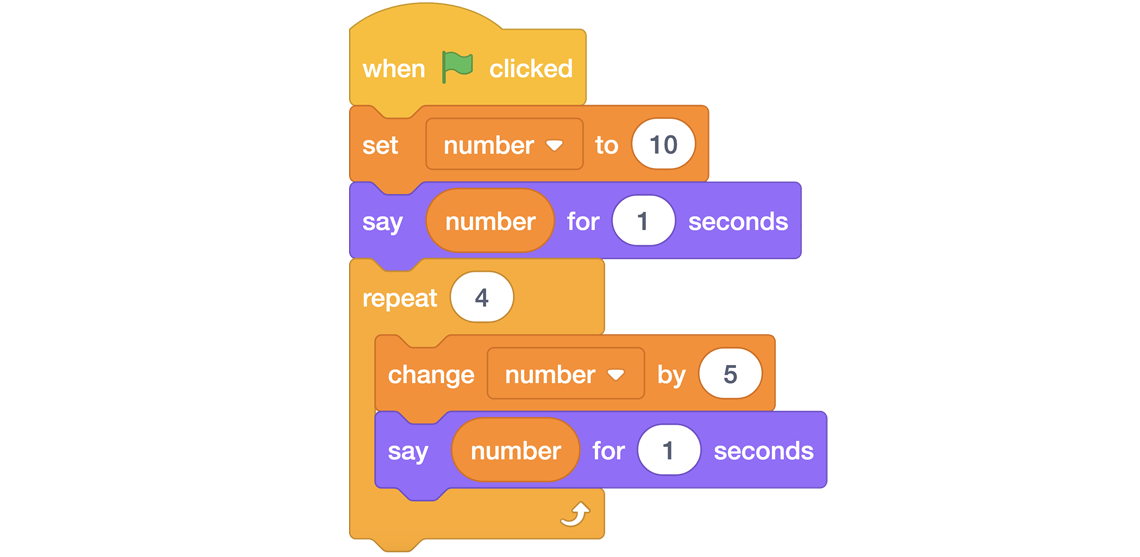
- Predict what number you will end up with.
- Then, run the code in Scratch to check if you are correct.
Question 2
Let’s use another skip counting pattern from the Minds On section:
Start at 21. Skip count backwards by 2, for 9 skips.
What number do we end up with?
Alter the code according to our question.
To skip backwards, remember to subtract for the change number block.
Press ‘Visual Code’ to reveal the visual Scratch code for this question.
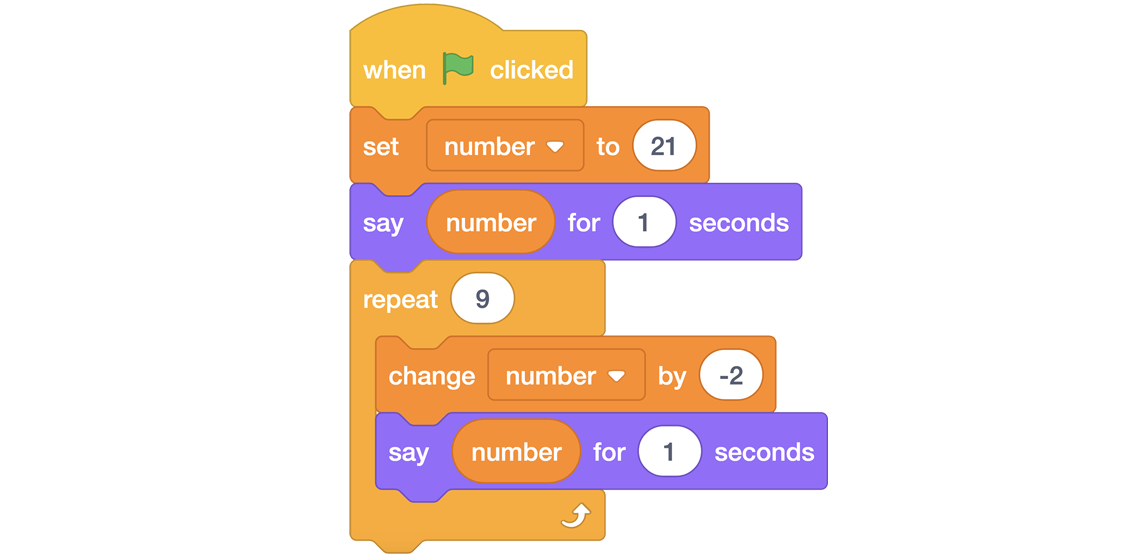
Question 3
Using the Scratch code provided, try this next question on your own:
Start at 39. Skip count forward by 5, for 5 skips.
What number do we end up with?
Remember to change the starting number, number of repeats, and how much the number is changed by.
Consolidation
Skip counting to 1000

Now that we’ve skip counted with and without code, let’s skip count to 1000 by 50s, 100s, and 200s with the help of the Scratch code.
You can also do this learning activity with, or without the Scratch code.
Press Scratch(Opens in a new window) to access the same code that you worked with in the Action section and explore the following questions.
You will need to adjust the number of repeating events, so that the code will end at 1000.
Brainstorm
Making predictions
Predict and reflect on the following questions:
- How will you know if your code is correct?
- What are some ways that you could check?
Record your ideas in a notebook or a method of your choice.
Count by 50s
Start at 600 and count by 50s, to 1000.
How many repeats do you need to end up at 1000?
Press ‘Show Code’ to reveal the Scratch code details.
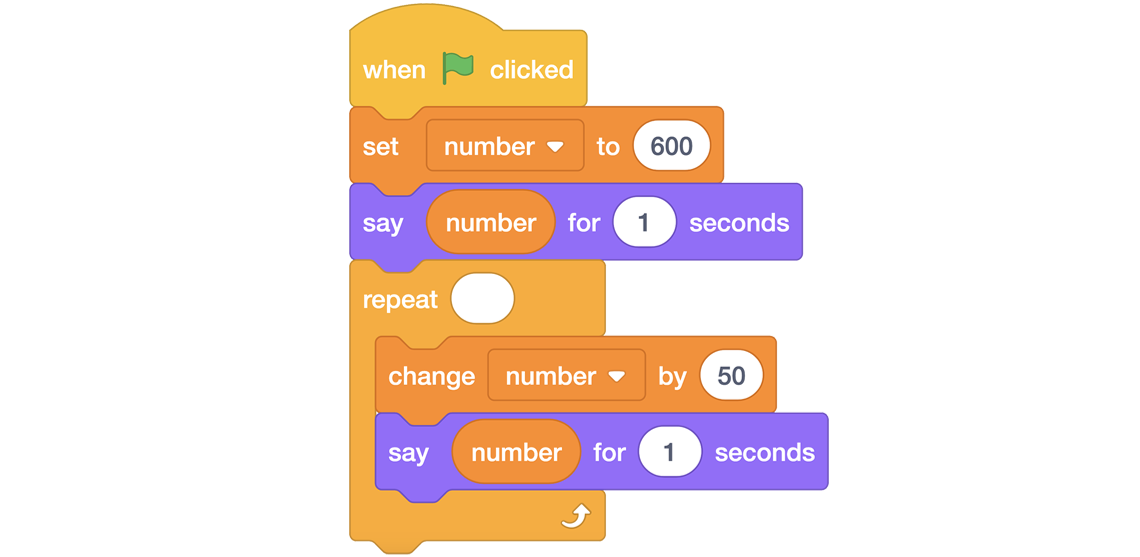
Select the correct answer, then press ‘Check Answer’ to see how you did.
Count by 100s
Start at 300 and count by 100s, to 1000.
How many repeats do you need to end up at 1000?
Press ‘Show Code’ to reveal the Scratch code details.
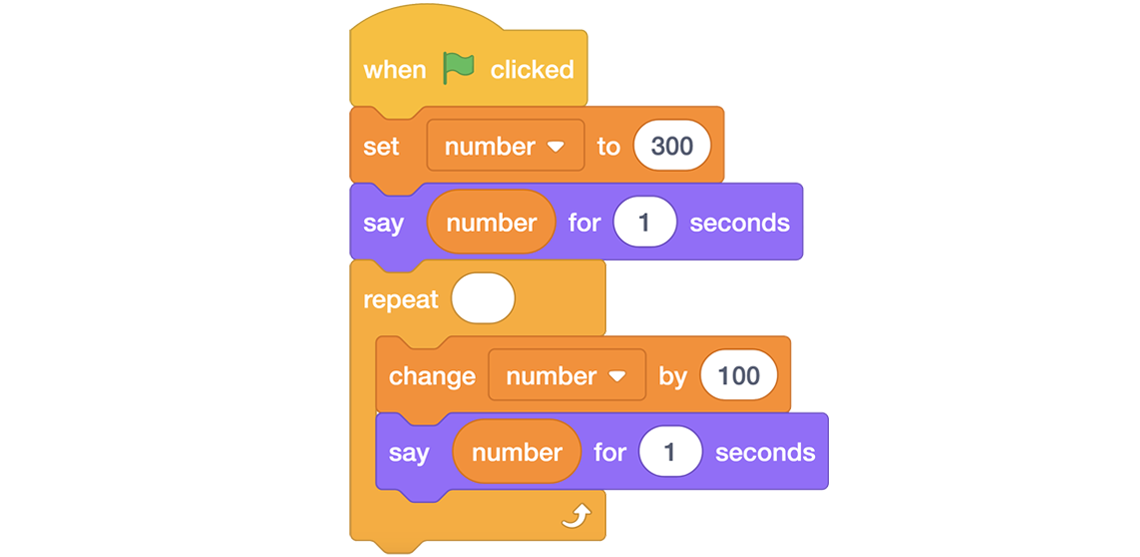
Select the correct answer, then press ‘Check Answer’ to see how you did.
Count by 200s
Start at 400 and count by 200s, to 1000.
How many repeats do you need to end up at 1000?
Press ‘Show Code’ to reveal the Scratch code details.
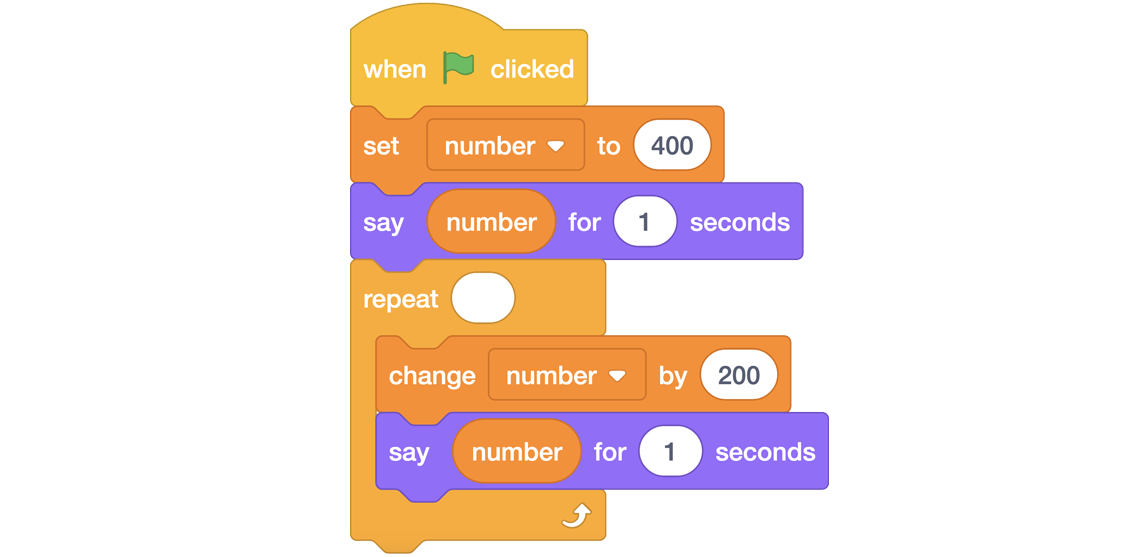
Select the correct answer, then press ‘Check Answer’ to see how you did.
Reflection
How do you feel about what you have learned in this activity? Which of the next four sentences best matches how you are feeling about your learning? Press the button that is beside this sentence.
I feel…
Now, record your ideas about your feelings using a voice recorder, speech-to-text, or writing tool.